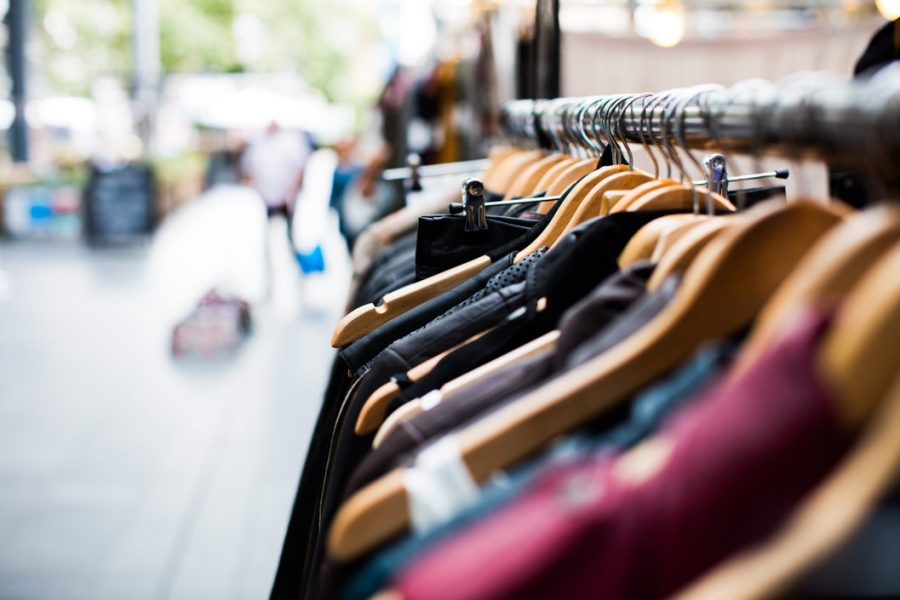Thrifting vs. Fast Fashion
Why buying second-hand is good for the environment
February 1, 2021
Recently there has been a slow uphill battle by the fashion industry to make more sustainable clothing, whether that be from recycled materials like plastic bottles or even recycled clothing and clothing scraps. While this is a good thing, costs are still relatively high, and not many people are going to want to spend $100+ on two articles of clothing just because it’s environmentally friendly. A better alternative would be buying clothing, accessories, or footwear second-hand. What does second-hand mean? Well, it’s synonymous with thrift store shopping. That being said, there are a plethora of reasons why thrifting is better than fast fashion, and not only to save money. Thrifting is good for the environment and the economy.
I may be a little biased on this subject, as I’ve been in and out of thrift stores nearly my whole life. Growing up in a household of five youngsters had its issues. We couldn’t always afford big name brands, and I mean, who can in this economy anyway? Thrifting is a great way to get the most out of your buck and not just with clothing but even furniture and other household appliances. Some thrift stores even offer student or military discounts, like Goodwill or Dakota Boys and Girls Ranch. Another thing to note is that you can find a lot of great pieces at a thrift store, and sometimes you can even “upcycle” clothing. Upcycling here means taking a piece of clothing and making it more to your liking or more fashionable, which itself allows you to save money. Buying second-hand is sustainable. When you buy clothes from the thrift store, you are, in a way, extending their life-span and giving them a new life.
Now the question at hand, why is buying second-hand goods for the environment? First of all, thrifting is good for the environment because it reduces the amount of plastic that ends up at the dump. Did you know that every year nearly 84% of clothing ends up in landfills? Because I certainly didn’t. Also, thrifting reduces the number of wasted resources that get burnt up from making new clothing or other textile products. If you looked it up, you would find that there is an astronomical amount of water used in textile production that is incredibly wasteful. Specifically, clothing/textile production requires around 9.3 BILLION tons of water annually. Kind of unbelievable, right? On another note, thrifting also helps cut back on pollution and carbon emissions. The fashion industry is calculated to be responsible for about 10% of global carbon emissions. When you buy clothing, do you consider the environmental impact? Or are you more concerned with which Gucci belt to buy? If you’re interested in calculating the carbon footprint of your wardrobe, you can visit: https://www.thredup.com/fashionfootprint and take their quiz.
Let’s address the concerns you might have with buying second-hand. The biggest concern for most people is cleanliness, and there are some mixed reviews about thrift stores. Generally, thrift stores are sanitary and do have policies concerning those matters. However, the majority of customers will usually immediately wash clothing before wearing them, whether that is clothing JCPenney. Thrift stores also sort through clothing and other donations to make sure they aren’t damaged, dirty, stained or are followed by a bad odor. There are very, very rare cases of issues like this at thrift stores. I think part of that depends on the quality of the store itself and, obviously, “location location location.” In my mind, thrift stores aren’t any different than garage sales or flea-markets. For obvious reasons, there are some things any sane person wouldn’t purchase from a thrift store, such as underwear, swimwear, or linens. I’m actually not sure if there will be a market for sustainable recycled underwear any time in the future, and that’s honestly fine by me.
Second-hand shopping isn’t only good for your bank account. It’s also great for the environment. If you choose thrifting over fast fashion, you are helping cut back your fashion-footprint. There will always be a concern when it comes to second-hand shopping, but the real concern should be aimed at the unnecessary waste. Nowadays, second-hand shopping isn’t only done in-store. The good news is that if you don’t like shopping in person, there are hundreds of online thrifting options right at your fingertips. A few different examples are RagStock, ThredUp, GoodFair, and Depop. Do you frequent the thrift stores? What are your concerns about thrifting or the environment in general? What are you doing to help out? As always, feel free to reach out via email with any comments you may have pertaining to today’s article or even just feedback about what I could have covered better. I enjoy hearing back from readers with their own opinions or personal thoughts. Stay tuned for new articles every Monday and Friday, and stay safe out there!
Demetria Slyt is a Dakota Student Opinion Writer. She can be reached at [email protected]












